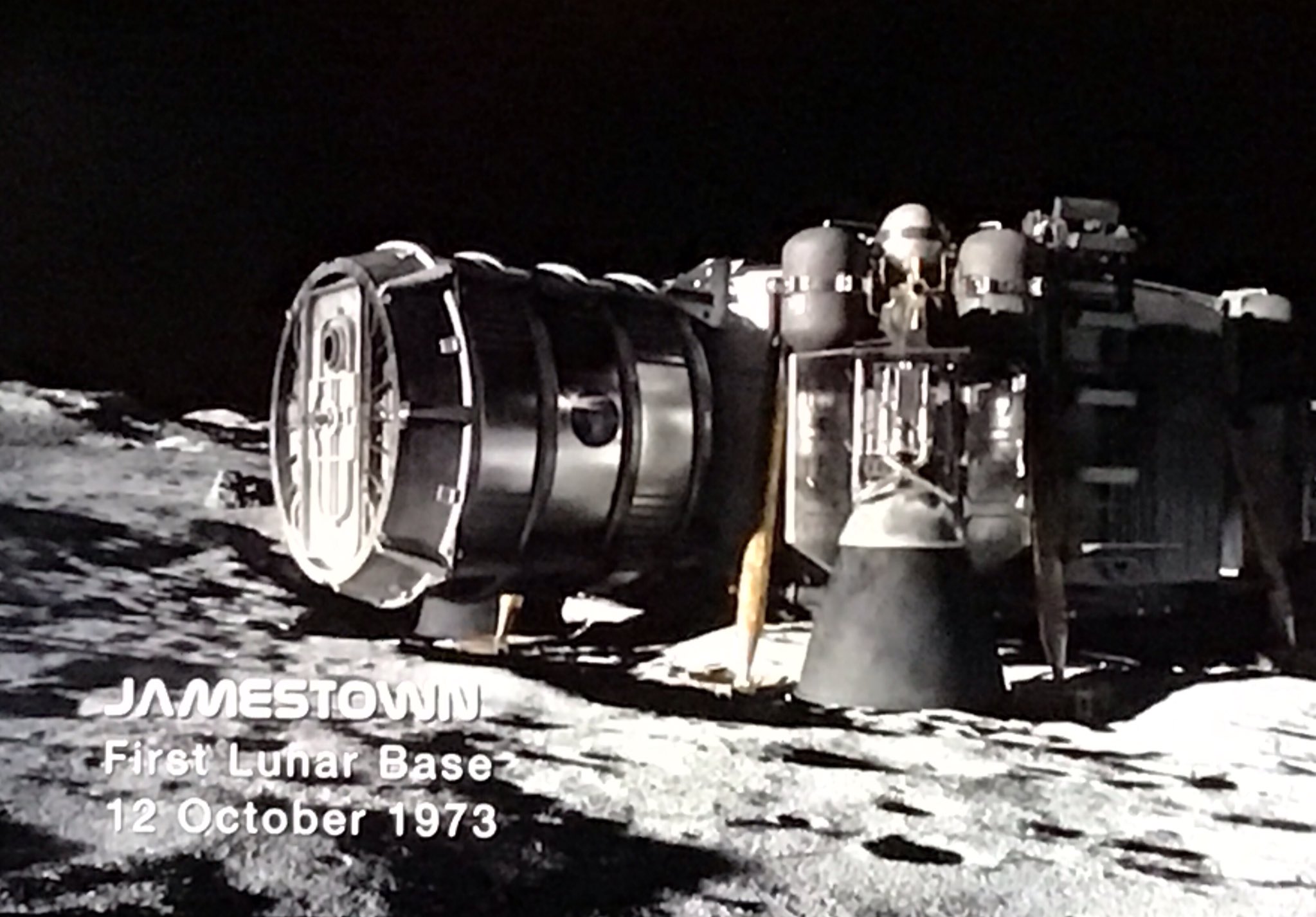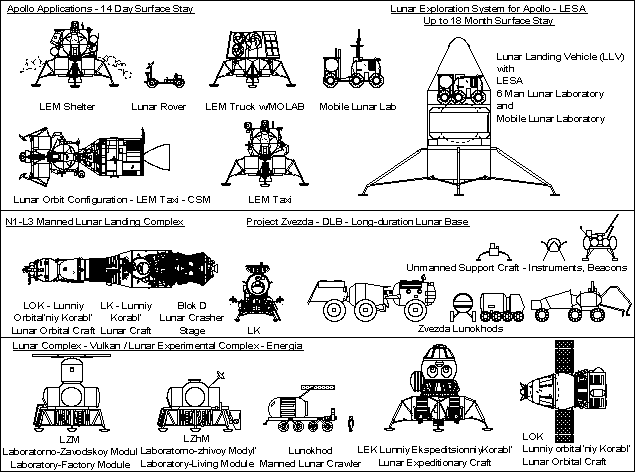For LESA a "clean sheet of paper" direct lunar lander, the Lunar Landing Vehicle (LLV) was conceived, which would take full advantage of the Saturn V trans-lunar payload capability. The LLV would have a payload of 12,700 kg, which would include life support systems and consumables, a shelter, and a Lunar Roving Vehicle. The shelter was designed for six crew, but only three would use it in the early missions. It consisted of an airlock, a cylindrical domed center structure, and an outer toroid work area. Adequate space existed in the toroid for suited astronauts to function and operate the controls in case of an emergency depressurization. Net LLV translunar injection mass was 41,000 kg (equivalent to a 43,000 kg mass payload for the Saturn V, including fairings). Landed mass was 18,000 kg, including 11,5000 to 13,500 kg payload (depending on whether a one or two stage LLV was developed), 900 to 1,000 cu m of living area, and access platforms 1.6 to 3.0 m above the surface, depending on the staging concept. Engines for the LLV would be modifications of the RL10-A3 Lox/LH2 engine.

